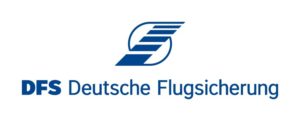The next system generation takes over at the DFS control centre in Munich
DFS, the German air navigation service provider, has put iCAS, an air traffic control system of the latest generation, into operation at its Munich branch. The company is now using one of the most modern functional platforms worldwide. The 350 DFS air traffic controllers in Munich are now handling air traffic from a new operations room built especially for the purpose.
The DFS control centre in Munich, which monitors lower airspace up to an altitude of about nine kilometres, has started using the new air traffic control system iCAS. iCAS is based on the 4D trajectory concept. With 4D trajectories, the system very precisely calculates the further flight path in three-dimensional space for each aircraft, supplemented by the fourth factor, time, to ensure the efficient flow of traffic. Air traffic controllers are alerted to potential conflicts between aircraft at an early stage, allowing their efficient resolution.
“iCAS is our answer to the Digital European Sky. It enhances the technical interplay between European air navigation service providers. It provides precise flight path calculations, a modern human machine interface and additional functions, which allows our air traffic controllers to deliver proactive, advanced air traffic management,” explained Dirk Mahns, Chief Operating Officer (COO) on the DFS Executive Board, on the advantages of the new system. DFS is the first air navigation service provider in Europe to use iCAS, an air traffic control system of the latest generation, in one of the most complex airspaces in the world.
The new iCAS system generation was developed in cooperation with the Dutch air navigation service provider, LVNL, and the Spanish technology company, INDRA, over a period of about six years and subsequently introduced within six months. The DFS branch in Karlsruhe, which monitors upper airspace, has been working with the first iCAS generation for more than five years. iCAS will be the basis for all further system developments at DFS and for many European air navigation service providers.
The system change required the Munich control centre to move to a new building, which meant it was possible to switch from the old to the new system without endangering technical and operational stability.
To ensure its safe introduction, iCAS was also tested comprehensively before it was put into operation. Most recently, this included live operations at night and at weekends. Nevertheless, due to the complexity of the system and the high number of data connections, anomalies can never be completely ruled out during the introductory phase. Substitute systems are in place for such situations, and they can be switched over to almost seamlessly. Such a switchover had to be carried out on 25 March, for example, which went smoothly and lasted several hours.
As is usual with system changes of this magnitude, the volume of traffic handled by the Munich control centre is being somewhat reduced. This also serves the interests of safety. The capacity is now gradually being raised to 100 percent again. “Despite the restrictions during the introductory phase, DFS assumes that this complex system introduction will not have a major impact on the smooth and orderly handling of air traffic,” said Mahns. “The air transport sector can continue to rely on our outstanding level of safety.”
The air traffic controllers at the DFS control centre in Munich monitor an airspace in Germany that stretches from Lake Constance to the Czech border and from Leipzig to the Brenner Pass and extends up to an altitude of 31,500 feet, which is about 9.6 kilometres. Arrivals and departures to Munich, Memmingen, Nürnberg, Leipzig, Erfurt and Dresden airports are also coordinated from Munich. Last year, the branch controlled around 860,000 aircraft movements.
